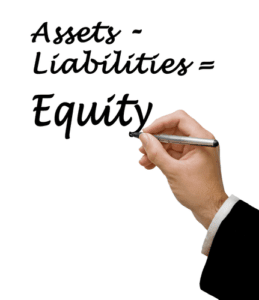
Retained earnings are a critical part of your accounting cycle that helps any small business owner grow their business. It’s the number that indicates how much capital you can reinvest in growing your business. For example, if you’re looking to bring on investors, retained earnings are a key part of your shareholder equity and book value. This number’s a must.Ultimately, before you start to grow by hiring more people or launching a new product, you need a firm grasp on how much money you can actually commit. Retained earnings are a type of equity and are therefore reported in the shareholders’ equity section of the balance sheet. Although retained earnings are not themselves an asset, they can be used to purchase assets such as inventory, equipment, or other investments.
Share This…

For example, if a company declares a stock dividend retained earnings normal balance of 10%, meaning the company would have to issue 0.10 shares for each share held by the existing stockholders. If you as a shareholder of the company owned 200 shares, you would then own an 20 additional shares, or a total of 220 (200 + (0.10 x 200)) shares once the company declares the stock dividend. Stock dividends are paid out as additional shares as fractions per existing shares to the stockholders. Your company’s equity investors, who are long term investors, will seek periodic payments in the form of dividends as a return on the money invested by them in your company.

Management and Retained Earnings

Although each account has a normal balance in practice it is possible for any account to have either a debit or a credit balance depending on the bookkeeping entries made. The retention ratio, also called the plowback ratio, is the portion of net income that the business keeps after dividends. Changes in the composition of retained earnings reveal important information about a corporation to financial statement users. A separate formal statement—the statement of retained earnings—discloses such changes. Retained earnings is the cumulative amount of earnings since the corporation was formed minus the cumulative amount of dividends that were declared. Retained earnings is the corporation’s past earnings that have not been distributed as dividends to its stockholders.
- As an investor, one would like to know much more—such as the returns that the retained earnings have generated and if they were better than any alternative investments.
- Additionally, investors may prefer to see larger dividends rather than significant annual increases to retained earnings.
- The last two are related to management decisions, wherein it is decided how much to distribute in the form of a dividend and how much to retain.
- The retention ratio (also known as the plowback ratio) is the percentage of net profits that the business owners keep in the business as retained earnings.
- Examining debt agreements, including covenants and interest rates, offers insight into potential financial strain.
Formula For Retained Earnings
Regularly assess your retained earnings in the context of your business objectives and shareholder needs, perhaps with the help of financial advisors. The dividend preferences of shareholders can influence retained earnings, especially in dividend-focused industries. High-debt companies may retain more earnings to reduce debt and improve financial health.
- The statement of retained earnings is a key financial document that shows how much earnings a company has accumulated and kept in the company since inception.
- So, retained earnings are the profits of your business that remain after the dividend payments have been made to the shareholders since its inception.
- Retained earnings are therefore an accounting entry which acts as a reserve for unallocated earnings, pending arbitration.
- Most software offers ready-made report templates, including a statement of retained earnings, which you can customize to fit your company’s needs.
- Because the company has not created any real value simply by announcing a stock dividend, the per-share market price is adjusted according to the proportion of the stock dividend.
Create a Free Account and Ask Any Financial Question
Retained earnings and profits are related concepts, but they’re not exactly the same. Double Entry Bookkeeping is here to provide you with free online information to help you learn and understand bookkeeping and introductory accounting.
Find your beginning retained earnings balance

On the other hand, it could be indicative of a company that should consider paying more dividends to its shareholders. This, of course, depends on whether the company has been pursuing profitable growth opportunities. Retained earnings are the cumulative net earnings or profits of a company after accounting for dividend payments. As an important concept in accounting, the word “retained” captures the fact that because those earnings were not paid out to shareholders as dividends, they were instead retained by the company. Negative retained earnings arise from various financial and operational challenges.
Retained earnings are a good source of internal finance used by all organizations. Dear auto-entrepreneurs, yes, you too have accounting obligations (albeit lighter!). Find out law firm chart of accounts how it sheds light on your company’s financial management, with a case study to illustrate.

- This means that Elena currently has $97,000 in retained earnings, a fair amount to reinvest in her business, and a good sign of future growth to her potential investors.
- It is important to note that the retained earnings amount can be negative, this happens when companies have net losses or payout dividends more than what is in the retained earnings account.
- Negative retained earnings affect a company’s financial statements, particularly the balance sheet and statement of shareholders’ equity.
- This can make a business more appealing to investors who are seeking long-term value and a return on their investment.
- If the company had a total of 100,000 outstanding shares prior to the stock dividend, it now has 110,000 (100,000 + 0.10×100,000) outstanding shares.
- Over time, retained earnings can have a significant impact on a company’s growth and profitability.
- In this case, Company A paid out dividends worth $10,000, so we’ll subtract this amount from the total of beginning period retained earnings and net profit.
For example, if you prepare a yearly balance sheet, the current year’s opening balance of retained earnings would be the previous year’s closing balance of the retained earnings account. So, if you’re looking at a balance sheet and you see a credit balance in the Retained Earnings account, it means the company has accumulated earnings over its lifetime. A debit balance, on the contra asset account other hand, would indicate that the company has accumulated net losses or has declared more dividends than its accumulated earnings.
For example, if the dividends a company distributed were actually greater than retained earnings balance, it could make sense to see a negative balance. Retained earnings represent the total profit to date minus any dividends paid.Revenue is the income that goes into your business from selling goods or services. The main difference between retained earnings and profits is that retained earnings subtract dividend payments from a company’s profit, whereas profits do not.
